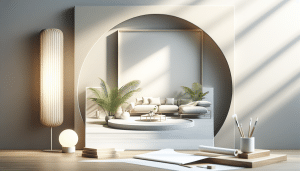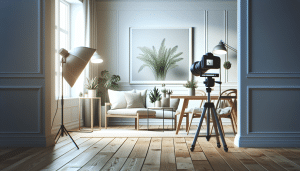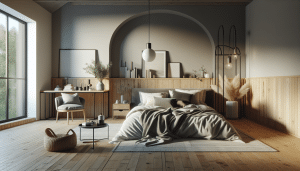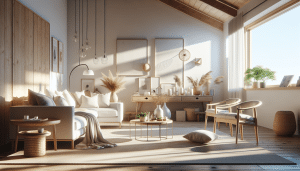Why Minimalist Living Spaces Make You Feel Happier
Samantha Lee September 15, 2025
Discover how minimalist living spaces can transform daily routines, mood, and overall wellbeing. Explore practical tips, psychological benefits, and design inspiration for anyone curious about embracing clutter-free, modern lifestyles in an authentic and sustainable way.
Understanding Minimalist Living and Its Core Values
Minimalist living spaces are designed to prioritize clarity, purpose, and simplicity over visual clutter or excessive decoration. This approach often results in open areas, neutral palettes, and functional furniture that emphasize what is truly important in your surroundings. Many find that adopting minimalist home design can help reduce stress and decision fatigue, because every item has a clear purpose and place. The concept is rooted in the idea that less can actually be more: more peace, more space, and even more joy. By intentionally reducing distractions and focusing on essentials, minimalist homes can help support mental wellness in subtle but powerful ways.
Across continents, minimalist interiors have grown in popularity as busy individuals seek calm within their personal environments. Design trends from Scandinavian countries and Japan, such as ‘hygge’ and ‘wabi-sabi,’ have influenced modern minimalist spaces with their focus on coziness, balance, and acceptance of imperfection. Adopting minimalist living doesn’t mean eliminating personal style. Instead, it encourages highlighting meaningful pieces or experiences, creating a curated atmosphere that reflects genuine values. Homeowners frequently discover that fewer possessions allow for easier cleaning, less maintenance, and more time spent living rather than organizing.
Minimalism is not about deprivation. Instead, it’s about consciously choosing what sustains and uplifts, allowing room for creativity and connection. Studies have shown that tidy and organized environments are linked with better focus and lower levels of cortisol, a key stress hormone (see https://www.apa.org/news/press/releases/2010/10/clutter-stress). Even those in small urban apartments report that removing unnecessary items gives their rooms an expansive, airy feel, deeply improving mood. As a lifestyle movement, minimalism offers a practical antidote to the overwhelm of consumer culture.
The Surprising Psychological Benefits of Simplified Spaces
Living with less can lead to more mental clarity, research suggests, as excess belongings can weigh down attention and contribute to chronic anxiety. A minimalist living space may help some people feel calmer and more grounded after a busy day. Natural light, open flooring, and intentional décor have all been linked to improved emotional health according to interior psychology studies (https://psycnet.apa.org/record/2017-36420-001). Decluttering also empowers individuals to make better choices about their own routines and relationships, reinforcing feelings of autonomy and self-efficacy.
Proponents of minimalism argue that clear surfaces and uncluttered shelves foster greater creativity and focus, especially in jobs or studies that require deep concentration. The brain isn’t forced to process constant stimuli from visual excess, making it easier to relax or enter a productive flow state. Families and couples sometimes notice lower conflict levels as shared spaces become easier to maintain and negotiate. Decluttering can even be viewed as a mindful practice—encouraging reflection on why we hold onto certain objects or habits, and which are genuinely meaningful or necessary.
While everyone’s ideal living environment differs, common feedback from minimalist adopters includes reduced stress, fewer cleaning chores, and a renewed appreciation for experiences over things. Children also may benefit from less clutter; organized play areas allow for better focus, calmer play sessions, and easier cleanup routines according to family therapists (https://www.ncbi.nlm.nih.gov/pmc/articles/PMC4195638/). Design that supports emotional well-being inherently values both functionality and aesthetics—key goals of minimalist living.
Design Elements That Make Minimalist Spaces Inviting
Minimalist design relies on careful selection of colors, materials, and patterns to create harmony within a home. Neutral tones such as white, gray, beige, and earth shades dominate, allowing the eye to rest and fostering a sense of calm. However, the inclusion of natural textures—like wood, stone, linen, or indoor plants—prevents the space from feeling stark or cold. These elements bring warmth and subtle interest, anchoring the minimalist aesthetic in comfort and approachability.
Smart storage solutions play an essential role in keeping spaces organized and serene. Hidden drawers, wall-mounted shelving, and multipurpose furniture maximize utility without crowding rooms. Good lighting also transforms minimalist homes, emphasizing openness and flow. Experts recommend layering ambient, task, and accent lights to create various moods as needed. In minimalist kitchens, for example, open shelving is balanced by seamless cabinetry and a limited, cohesive color palette. The result: an area that’s easy to navigate, clean, and enjoy.
Personal touches matter in minimalist design. While the focus remains on simplicity, displaying a favorite artwork, a few carefully chosen books, or a single sculptural vase can give a room soul. Minimalism also encourages sustainability—selecting fewer, higher-quality items that last longer and bring continuous value. Upcycling vintage furniture, investing in artisanal décor, or incorporating energy-efficient upgrades are all compatible with minimalist lifestyles. This approach supports not just visual peace but also responsible consumption (https://www.epa.gov/recycle/reducing-waste-what-you-can-do).
Steps to Start Living Minimally Without Overwhelm
Transitioning to a minimalist living space is a process, not a sudden transformation. Begin by categorizing belongings—keep, donate, recycle, or discard—starting with visible surfaces or single-use areas like entryways. Making small, consistent decisions each week avoids feeling overwhelmed and allows time for habits to shift. Many find that the emotional obstacles to letting go of possessions can be more challenging than the physical process. Support from friends, family, or online minimalist communities provides motivation and accountability as you simplify your space (see https://www.habitat.org/stories/guide-declutter-your-home).
Once you clear the first areas, notice how it feels to live with less. Often, space opens up both physically and mentally. Some recommend applying the ‘one in, one out’ rule to prevent clutter from returning; for every new item brought into the home, another should be donated or recycled. It’s also helpful to review your routine periodically. Evaluate what belongings or routines actually contribute to comfort and joy, as minimalist living is highly personal and evolves with life stages.
Minimalism does not demand strict rules or total white walls. Flexible approaches—such as capsule wardrobes, digital decluttering, or cultivating multipurpose rooms—make the transition approachable for households of all sizes. The most satisfying minimalist living spaces are those adapted to unique lifestyles, supporting hobbies, relaxation, and relationships while reducing time spent on chores. Embracing minimalism is a gradual, ongoing journey that aims to bring lasting happiness.
Long-Term Benefits of Minimalist Living for Wellbeing and the Environment
Research is showing increasing evidence that minimalist environments can foster greater psychological and physical health over time. Tidier homes translate into fewer allergens and lower dust levels, contributing to improved indoor air quality. Minimalism can also support physical activity—open spaces allow for easier movement, stretching, or practicing hobbies. Over the years, these small benefits add up to support overall wellness (https://www.cdc.gov/healthyhomes/index.html).
From an environmental perspective, mindful consumption habits inherent to minimalism reduce the demand for new products. This results in fewer resources being extracted, transported, and eventually discarded, lowering individual carbon footprints. Supporting secondhand and local goods, as well as prioritizing reusable designs, complements sustainability goals. Many who make these lifestyle shifts discover unexpected savings in time, money, and energy—resources that can then be redirected toward personal growth and community involvement.
On a personal level, minimalism reinforces gratitude for what truly matters—clear time, supportive relationships, health, and purpose. Children may learn positive lifelong habits about managing resources. Seniors moving to smaller homes can adapt with less stress by focusing on cherished possessions. Minimalist spaces ultimately offer flexibility, peace of mind, and freedom to live more intentionally according to evolving values, making it a lifestyle that continues to inspire curiosity worldwide.
References
1. American Psychological Association. (2010). Clutter, stress and anxiety. Retrieved from https://www.apa.org/news/press/releases/2010/10/clutter-stress
2. Kaplan, S. (2017). The restorative benefits of nature: Toward an integrative framework. Retrieved from https://psycnet.apa.org/record/2017-36420-001
3. Fiese, B. H., & Winter, M. A. (2006). Family routines and rituals. Retrieved from https://www.ncbi.nlm.nih.gov/pmc/articles/PMC4195638/
4. U.S. Environmental Protection Agency. (2023). Reducing Waste: What You Can Do. Retrieved from https://www.epa.gov/recycle/reducing-waste-what-you-can-do
5. Habitat for Humanity. (2021). A Guide to Declutter Your Home. Retrieved from https://www.habitat.org/stories/guide-declutter-your-home
6. Centers for Disease Control and Prevention. (2022). Healthy Homes. Retrieved from https://www.cdc.gov/healthyhomes/index.html







